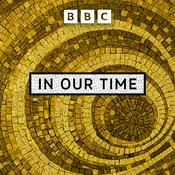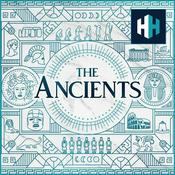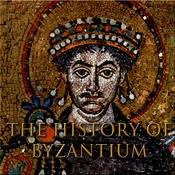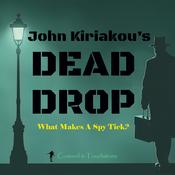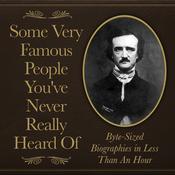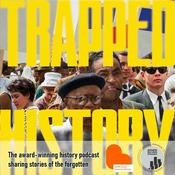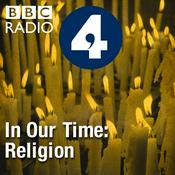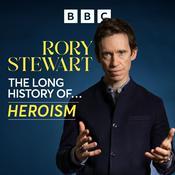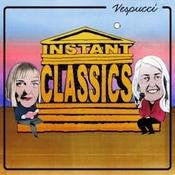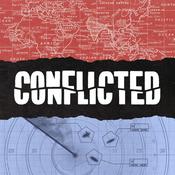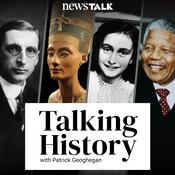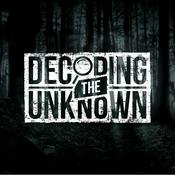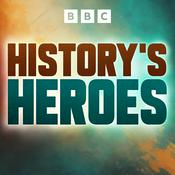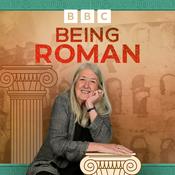2154 episodes

SMS: The invention of text messaging
29/12/2025 | 10 mins.
In October 1984, as the market for mobile phones was just opening up, one man decided it would be useful if the new technology could be used to send and receive short, electronic messages.But colleagues of Friedhelm 'Fred' Hillebrand - an engineer for Germany's Deutsche Telekom - told him the system's 160-character limit for text messages rendered it "useless".After spending an evening typing-up birthday, Christmas and fax messages Fred proved them wrong, and within 20 years the SMS or short message service had changed the way we communicate around the world. Fred Hillebrand tells Jacqueline Paine how text messaging very nearly didn't take off until it was discovered by young people.Eye-witness accounts brought to life by archive. Witness History is for those fascinated by the past. We take you to the events that have shaped our world through the eyes of the people who were there. For nine minutes every day, we take you back in time and all over the world, to examine wars, coups, scientific discoveries, cultural moments and much more. Recent episodes explore everything from the death of Adolf Hitler, the first spacewalk and the making of the movie Jaws, to celebrity tortoise Lonesome George, the Kobe earthquake and the invention of superglue. We look at the lives of some of the most famous leaders, artists, scientists and personalities in history, including: Eva Peron – Argentina’s Evita; President Ronald Reagan and his famous ‘tear down this wall’ speech; Thomas Keneally on why he wrote Schindler’s List; and Jacques Derrida, France’s ‘rock star’ philosopher. You can learn all about fascinating and surprising stories, such as the civil rights swimming protest; the disastrous D-Day rehearsal; and the death of one of the world’s oldest languages.(Photo: News message on a mobile phone display. Credit: Blick/RDB/ullstein bild via Getty Images)

Creating the board game Catan
26/12/2025 | 10 mins.
In 1995, Klaus Teuber’s board game Catan launched in Germany. The board is made up of hexagonal tiles, and it's a game about strategy and collecting resources.It's since sold over 40 million copies and been translated into more than 40 different languages. Klaus Teuber died in 2023. Megan Jones speaks to his son Benjamin, who now runs the company, with brother Guido.Eye-witness accounts brought to life by archive. Witness History is for those fascinated by the past. We take you to the events that have shaped our world through the eyes of the people who were there. For nine minutes every day, we take you back in time and all over the world, to examine wars, coups, scientific discoveries, cultural moments and much more. Recent episodes explore everything from the death of Adolf Hitler, the first spacewalk and the making of the movie Jaws, to celebrity tortoise Lonesome George, the Kobe earthquake and the invention of superglue. We look at the lives of some of the most famous leaders, artists, scientists and personalities in history, including: Eva Peron – Argentina’s Evita; President Ronald Reagan and his famous ‘tear down this wall’ speech; Thomas Keneally on why he wrote Schindler’s List; and Jacques Derrida, France’s ‘rock star’ philosopher. You can learn all about fascinating and surprising stories, such as the civil rights swimming protest; the disastrous D-Day rehearsal; and the death of one of the world’s oldest languages.(Picture: Klaus, Guido and Benjamin playing Catan. Credit: Benjamin Teuber)

Tamagotchi is born
25/12/2025 | 9 mins.
The Tamagotchi was first released in Japan in 1996 after it was developed by Akihiro Yokoi and his colleagues at his toy development company.Measuring just a few centimetres long, the egg-shaped digital gadget was home to a series of pixelated alien pets.Owners had to feed, clean and play with their pets by pressing three tiny buttons. Looking after your Tamagotchi and seeing them evolve was thrilling for many children and its popularity quickly spread from Japan across the world.Almost 100 million Tamagotchis have been sold in more than 50 countries. Akihiro Yokoi tells Emily Uchida Finch how the hit toy was born, and the impact its prevalence has had on his life and career. A Whistledown production for BBC Witness History.Eye-witness accounts brought to life by archive. Witness History is for those fascinated by the past. We take you to the events that have shaped our world through the eyes of the people who were there. For nine minutes every day, we take you back in time and all over the world, to examine wars, coups, scientific discoveries, cultural moments and much more. Recent episodes explore everything from the death of Adolf Hitler, the first spacewalk and the making of the movie Jaws, to celebrity tortoise Lonesome George, the Kobe earthquake and the invention of superglue. We look at the lives of some of the most famous leaders, artists, scientists and personalities in history, including: Eva Peron – Argentina’s Evita; President Ronald Reagan and his famous ‘tear down this wall’ speech; Thomas Keneally on why he wrote Schindler’s List; and Jacques Derrida, France’s ‘rock star’ philosopher. You can learn all about fascinating and surprising stories, such as the civil rights swimming protest; the disastrous D-Day rehearsal; and the death of one of the world’s oldest languages.(Photo:Tamagotchi.Credit:Yves Forestier/Sygma via Getty Images)

How the hoverboard was created
24/12/2025 | 10 mins.
It was Back to the Future II that made a generation of children dream of travelling by hoverboard.In the 1989 film, the hero Marty McFly escapes from his arch nemesis Biff by jumping on a flying skateboard.But it wasn’t until 2011 that inventor Shane Chen came up with the next best thing – a motorised skateboard that moves intuitively and gives the rider a feeling of floating.The creation became the must-have toy of 2015 and social media was flooded with videos of celebrities trying it out.But the hoverboard never brought riches for Shane. He tells Vicky Farncombe how cheap knock-offs stole his profits and caused fires and accidents.Eye-witness accounts brought to life by archive. Witness History is for those fascinated by the past. We take you to the events that have shaped our world through the eyes of the people who were there. For nine minutes every day, we take you back in time and all over the world, to examine wars, coups, scientific discoveries, cultural moments and much more. Recent episodes explore everything from the death of Adolf Hitler, the first spacewalk and the making of the movie Jaws, to celebrity tortoise Lonesome George, the Kobe earthquake and the invention of superglue. We look at the lives of some of the most famous leaders, artists, scientists and personalities in history, including: Eva Peron – Argentina’s Evita; President Ronald Reagan and his famous ‘tear down this wall’ speech; Thomas Keneally on why he wrote Schindler’s List; and Jacques Derrida, France’s ‘rock star’ philosopher. You can learn all about fascinating and surprising stories, such as the civil rights swimming protest; the disastrous D-Day rehearsal; and the death of one of the world’s oldest languages.(Photo: A hoverboard. Credit: Getty Images)

Inventing Play-Doh
23/12/2025 | 10 mins.
In 1956, one of the world’s most beloved children’s toys went on sale for the first time, but its origins were surprising.The modelling clay had started out as a household cleaning product. In the days when homes were heated by coal fires, it was used to clean soot and dirt from wallpaper.But its manufacturer ran into trouble as oil and gas heating became increasingly popular. Then Kay Zufall, whose brother-in-law owned the firm, had an idea.Her children enjoyed using the putty to make ornaments and jewellery so she suggested the company switch markets and give the clay a new name. Play-Doh was born.According to the current brand owners, more than three billion cans have been sold in 80 countries around the world. Peg Roberts, Kay’s daughter, tells Jane Wilkinson how her mother had the idea.Eye-witness accounts brought to life by archive. Witness History is for those fascinated by the past. We take you to the events that have shaped our world through the eyes of the people who were there. For nine minutes every day, we take you back in time and all over the world, to examine wars, coups, scientific discoveries, cultural moments and much more. Recent episodes explore everything from the death of Adolf Hitler, the first spacewalk and the making of the movie Jaws, to celebrity tortoise Lonesome George, the Kobe earthquake and the invention of superglue. We look at the lives of some of the most famous leaders, artists, scientists and personalities in history, including: Eva Peron – Argentina’s Evita; President Ronald Reagan and his famous ‘tear down this wall’ speech; Thomas Keneally on why he wrote Schindler’s List; and Jacques Derrida, France’s ‘rock star’ philosopher. You can learn all about fascinating and surprising stories, such as the civil rights swimming protest; the disastrous D-Day rehearsal; and the death of one of the world’s oldest languages.(Photo: Play-Doh. Credit: Anacleto Rapping/Los Angeles Times via Getty Images)
More History podcasts
Trending History podcasts
About Witness History
Listen to Witness History, In Our Time and many other podcasts from around the world with the radio.net app

Get the free radio.net app
- Stations and podcasts to bookmark
- Stream via Wi-Fi or Bluetooth
- Supports Carplay & Android Auto
- Many other app features
Get the free radio.net app
- Stations and podcasts to bookmark
- Stream via Wi-Fi or Bluetooth
- Supports Carplay & Android Auto
- Many other app features


Witness History
download the app,
start listening.
